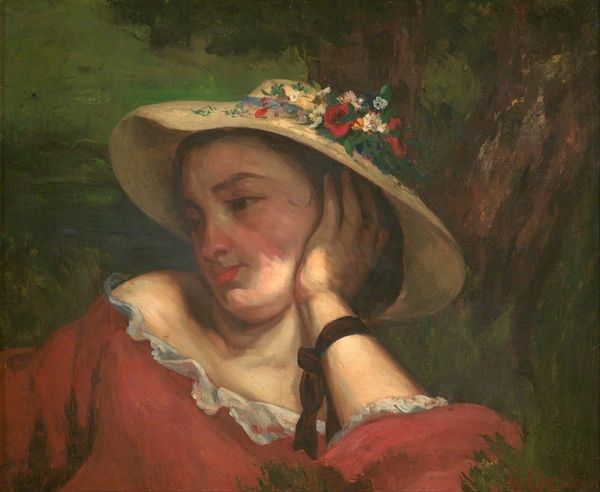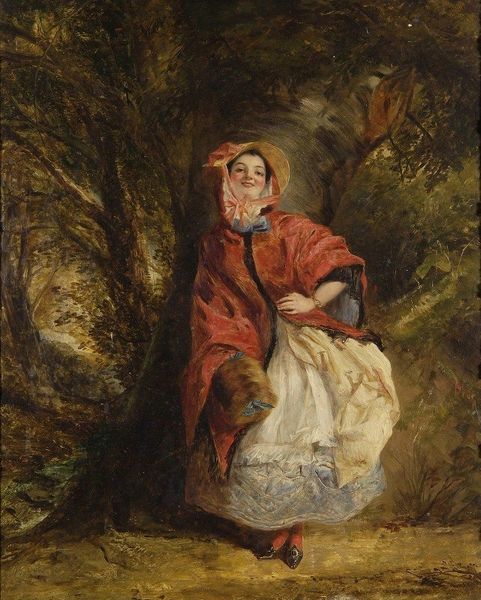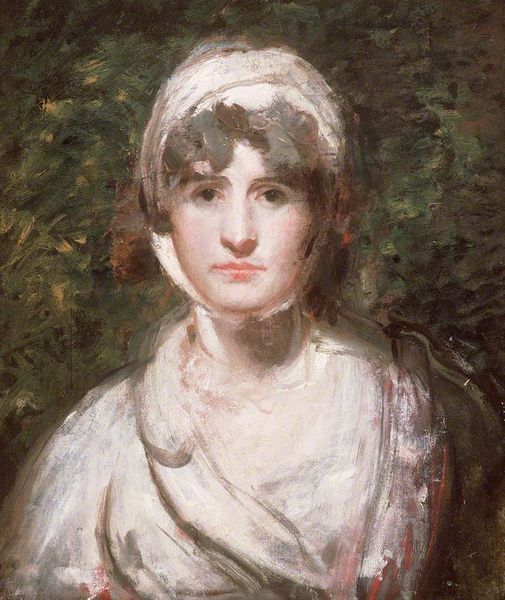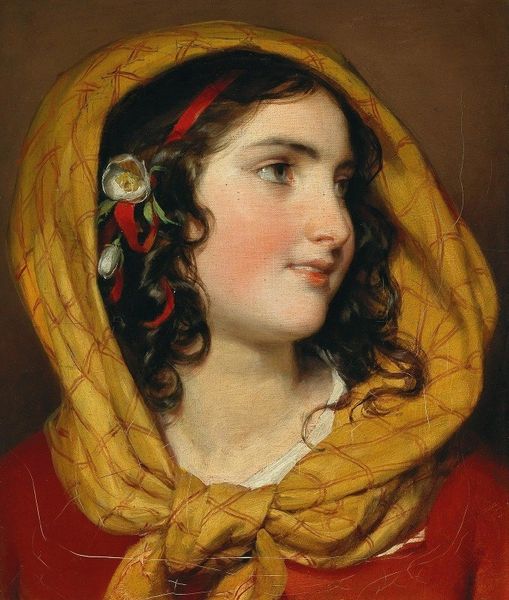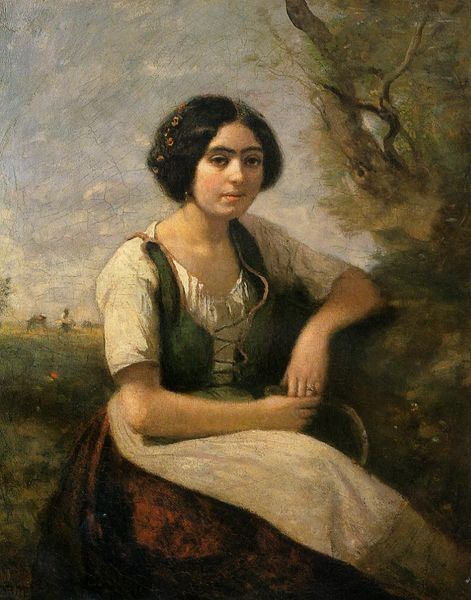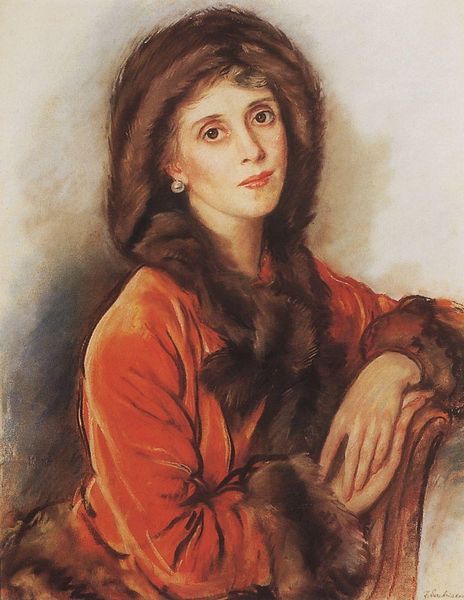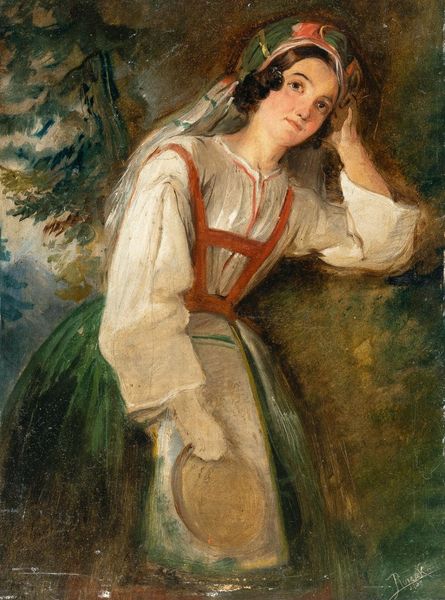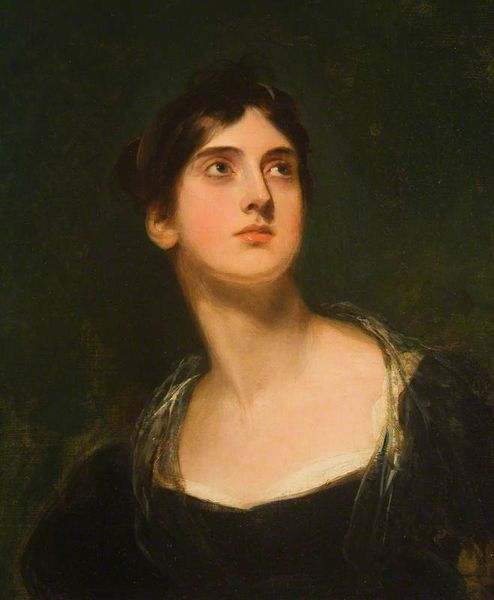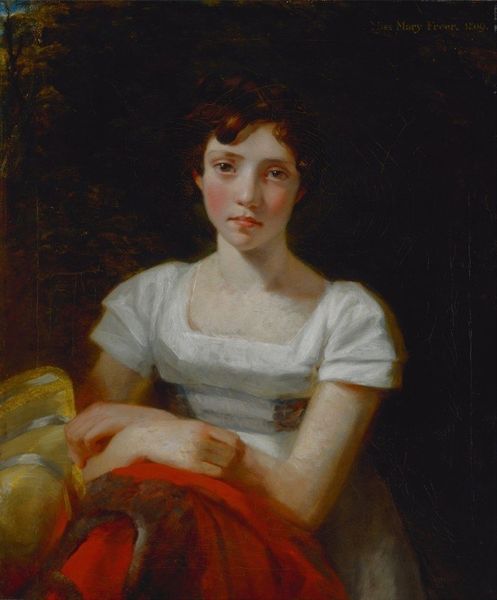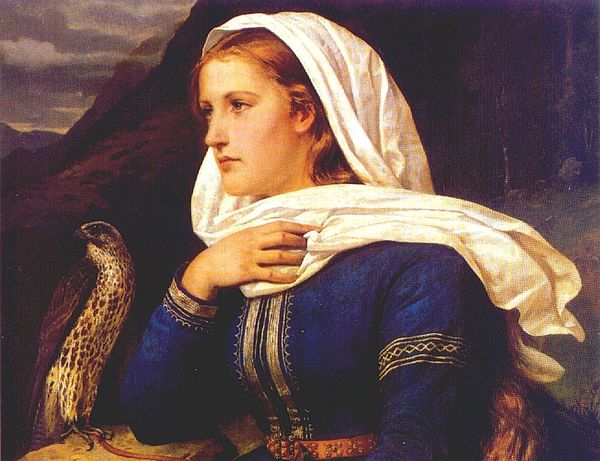
#
portrait
#
portrait
#
portrait reference
#
portrait head and shoulder
#
animal portrait
#
animal drawing portrait
#
portrait drawing
#
facial portrait
#
portrait art
#
female-portraits
#
fine art portrait
#
digital portrait
Copyright: Public domain
Curator: We’re looking at Gustave Courbet’s “Peasant Wearing Madras,” created around 1848. It’s an intimate portrayal, wouldn’t you agree? Editor: Indeed. The piece immediately evokes a sense of quiet introspection, a melancholic tenderness in her gaze. The limited color palette really amplifies that mood. Curator: Let’s examine that palette closer. Notice how Courbet uses a relatively subdued range of blues, grays, and reds, punctuated by earth tones in the background. This restricted palette isn’t accidental. Editor: Exactly! We can situate this in the broader social landscape. The 1840s were marked by immense social upheaval. There’s a definite undercurrent of that present here: The subdued colors seem to mirror the somber realities for the peasantry during this period, almost like a muted rebellion against the artifice of the elite. Curator: I can see your point, however I also think it draws attention to form. The madras scarf provides a critical pop of texture. The red introduces dynamism that contrasts her pose which could be interpreted as reposeful or defeated. The geometry of the pattern juxtaposed with her softly modeled face underscores his engagement with painterly structures. Editor: That interplay between the textile’s geometry and the woman's softness also highlights a dichotomy. Her garment hints at identity and potentially even resistance in her dress—a quiet statement within a class-rigid society. The slight blush on her cheeks gives life to the subject, defying the hardships that peasant women of that era routinely endured. Curator: I do love how her slightly downcast eyes suggest an inward focus, a rich inner life. What do you make of his technique? Editor: We have to address its clear departure from academic idealism. Courbet has no problem portraying this woman's realness— the unidealized beauty. Curator: Very true! Overall it's a piece that leaves us with an evocative image of someone both deeply human and situated within a complex socio-political milieu. Editor: Yes, art becomes a crucial form of quiet witnessing. Her look resonates and causes us to question what exactly has drawn our attention to her, what her story may be.
Comments
No comments
Be the first to comment and join the conversation on the ultimate creative platform.
